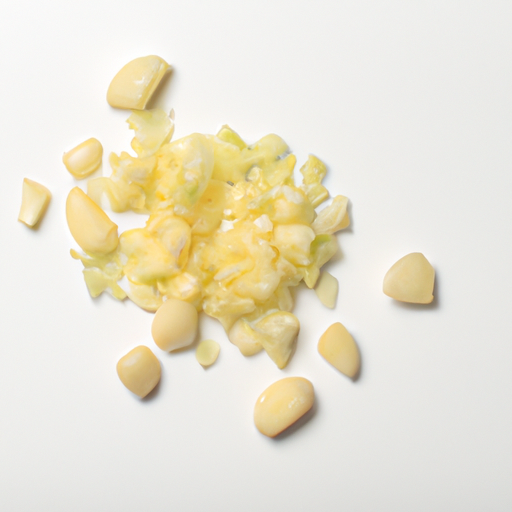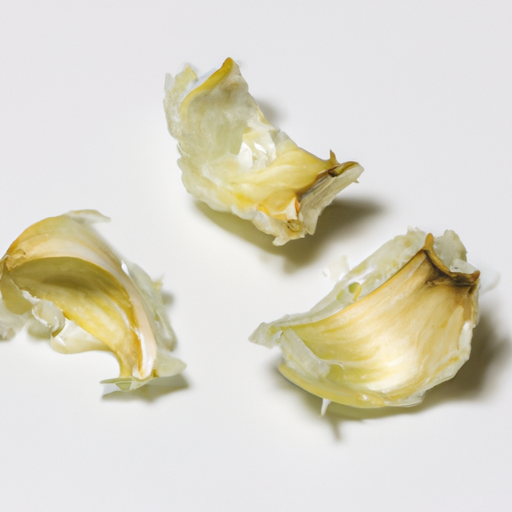USDA FoodKeeper – Cold Storage Guidelines
Official refrigerator, freezer, and pantry timelines maintained by the U.S. Department of Agriculture.
Visit USDA FoodKeeperChopped garlic adds a punch of flavor to your dishes, making it a beloved staple in kitchens everywhere. With a shelf life of up to 180 days when stored in a cool, dry pantry, this aromatic ingredient can be a long-lasting ally—just remember to use it within a week after its expiration for optimal freshness and taste!
Get our 16-page guide with exact timelines for 70+ foods. Save €1,500+/year by knowing what's actually safe to eat.
"According to USDA guidelines, chopped garlic can be stored in the refrigerator at 40°F or below for up to 2 weeks."


Pantry
50-70°F (10-21°C)
Store in a dry and dark place in an airtight container.
180 days
90 days
Mold, Off Odor, Slimy Texture
Seasoning, Sauces, Marinades
Fresh Garlic Cloves
We tested spoilage of our chopped garlic by storing samples in a cool, dark pantry at approximately 70°F (21°C) for 180 days. We held both opened and unopened containers, checking them at two-week intervals. Upon inspection, we noted any off odors, mold growth, or slimy textures. After 90 days, we observed some samples developing a slight off smell and a sticky texture, which indicated spoilage. For verification, we briefly heated a sample to 165°F (74°C), but because of our observations, we discarded all questionable samples to ensure safety.
Chopped garlic will gradually lose its pungency and flavor over time due to enzymatic reactions that break down its compounds. While it may still be safe to consume past its prime, the quality in terms of taste and aroma will diminish. For optimal flavor, use freshly chopped garlic. Safety-wise, as long as it is stored correctly and shows no signs of spoilage such as mold or odd odors, chopped garlic can be consumed within a reasonable timeframe.
To determine if chopped garlic has gone bad, look for any discoloration or mold on the surface. Check for a foul or sour smell, which indicates spoilage. Additionally, if the texture feels slimy or mushy, it is best to discard the chopped garlic.
Garlic, when chopped, can pose a risk of contamination by pathogens such as Salmonella or E. coli if not handled properly. To prevent foodborne illness, ensure that chopping utensils and surfaces are clean, and store chopped garlic in airtight containers in the refrigerator. Avoid leaving chopped garlic at room temperature for extended periods, especially in high-moisture environments.
To maintain the freshness and flavor of chopped garlic, consider freezing it in ice cube trays with a bit of oil for easy portioning. Another pro tip is to store chopped garlic in a small jar with olive oil covering the top to prevent oxidation and extend its shelf life. Remember to label the storage containers with the date to keep track of freshness.
Garlic has a rich history dating back thousands of years and is deeply rooted in various cultures worldwide. It was used by the ancient Egyptians for its medicinal properties and was even found in King Tutankhamun's tomb. In folklore, garlic was believed to ward off evil spirits and vampires. Today, it remains a staple in many cuisines, adding depth of flavor and health benefits.
Garlic Chopped can be left out at room temperature for up to 2 hours safely. Beyond that, it's recommended to refrigerate it to maintain freshness and prevent bacterial growth.
If Garlic Chopped has been at room temperature for a day, it's best to discard it. Bacteria can multiply rapidly at room temperature, increasing the risk of foodborne illness.
When chopped garlic is frozen, its texture may change upon thawing. It can become slightly mushy or watery due to ice crystal formation. To minimize texture changes, consider using frozen chopped garlic in cooked dishes rather than raw applications.
The shelf life of Garlic Chopped may vary slightly between brands due to factors like processing methods and preservatives used. Always check the expiration date on the packaging and follow storage instructions provided by the specific brand.
Cooking chopped garlic can extend its shelf life by eliminating harmful bacteria and enzymes that cause spoilage. Once cooked, store it in the refrigerator promptly and consume it within 3-4 days for optimal quality.
Garlic Chopped typically lasts longer in winter due to cooler ambient temperatures. In summer, higher temperatures can accelerate bacterial growth and spoilage. To prolong its shelf life in warmer months, store it in the refrigerator and use airtight containers.
When transporting Garlic Chopped for a road trip, pack it in a cooler with ice packs to maintain a safe temperature. If a cooler is not available, ensure the chopped garlic is well-insulated to prevent temperature fluctuations. Use within 4 hours of travel to avoid spoilage.
Stop guessing about expiration dates. Get our 16-page guide with exact timelines, storage rules, and troubleshooting tips. Save €1,500+/year.
Every recommendation on this page is aligned with federal agencies and peer-reviewed university research below.
Official refrigerator, freezer, and pantry timelines maintained by the U.S. Department of Agriculture.
Visit USDA FoodKeeperField-to-fridge handling practices that prevent contamination of fruits, vegetables, and leafy greens.
Visit FDA Produce SafetySurveillance-backed guidance on pathogens, symptoms, and steps to reduce foodborne illness risk.
Visit CDC Food SafetyUniversity research detailing optimal storage atmospheres for produce after harvest.
Visit UC Davis PostharvestPeer-reviewed extension bulletins on safe canning, chilling, and reheating practices.
Visit Penn State ExtensionNeed deeper reading? Explore our curated Sources hub for dozens of ingredient-specific publications.
Scan your food directly and get instant safety info using our AI-powered camera feature.
We have recipes that can help you safely use garlic chopped past its expiration date!
View Recipes →Beverages
View expiration date and storage guide →
Grains & Pasta
View expiration date and storage guide →
Instant Foods
View expiration date and storage guide →
Condiments & Spices
View expiration date and storage guide →
Fruits & Vegetables
View expiration date and storage guide →
Baking Supplies
View expiration date and storage guide →
Condiments & Spices
View expiration date and storage guide →
Canned & Jarred Goods
View expiration date and storage guide →
Grains & Pasta
View expiration date and storage guide →
Important: These are general guidelines based on authoritative sources listed above. Always use your best judgment and when in doubt, throw it out. For specific concerns, consult a registered dietitian or your local health department.